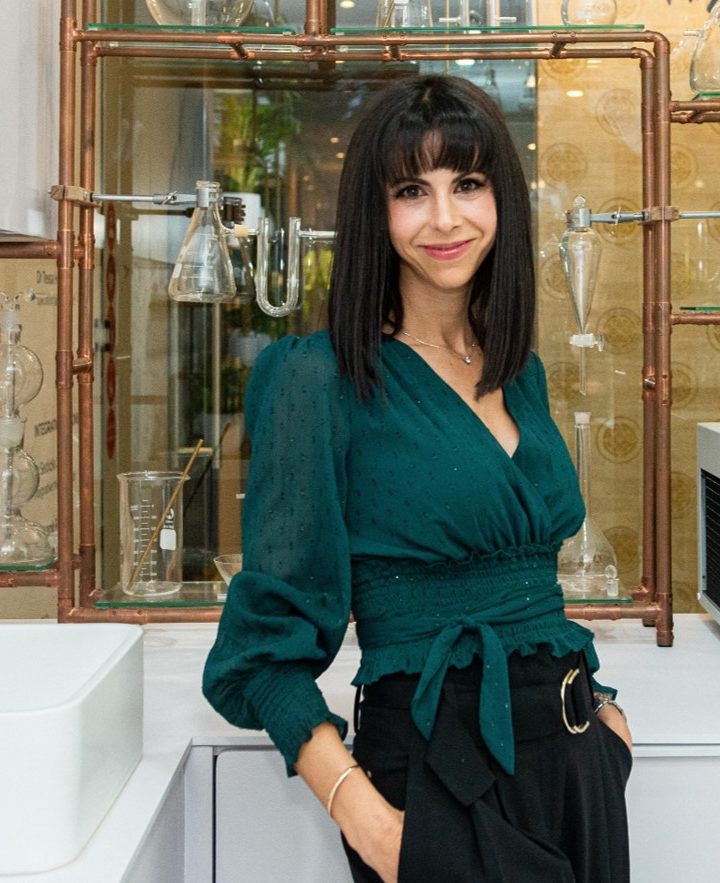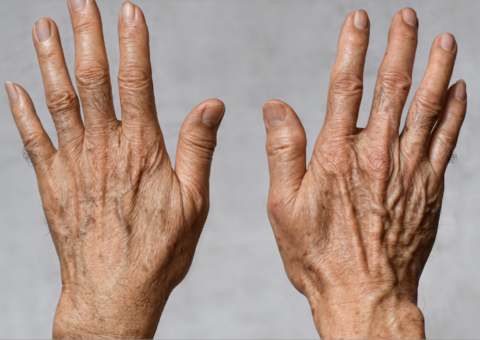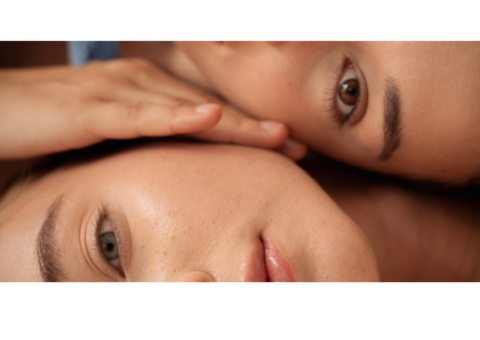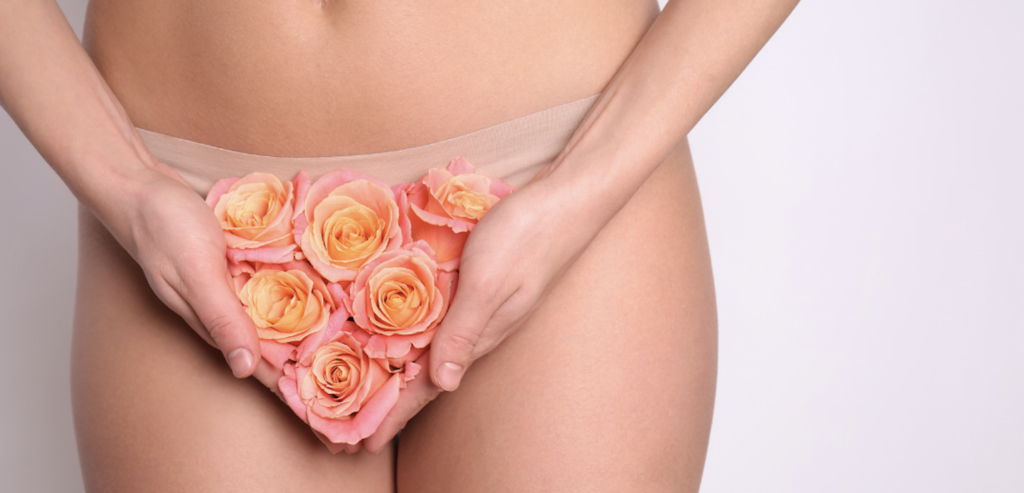
That got your attention right?
First up let’s clarify some general anatomy. Your vagina is the inside bit running from your cervix to the outside world. Your vulva is the outside skin surrounding it with all the other bits (labia, clitoris etc).
So straight off the bat – it’s a hard no as to whether your vagina needs special skincare products. It’s a mucosal surface (like the inside of your mouth) with a very finely balanced microbial ecosystem and pH that is easily disrupted and irritated. Douching or cleansing with fragranced cleansers upsets the happy acidic pH of your vagina (which functions best at a fairly narrow range of 3.8-4.5) and is a recipe for yeast infections, bacterial vaginosis, irritation, itching, and even pelvic inflammatory disease. Frankly, when it comes to cleansing, your vagina is like an exhausted first-time mom. It just wants to be left in peace and quiet. It already has enough to deal with seeing that women were designed with their vaginas right next to waste disposal systems.
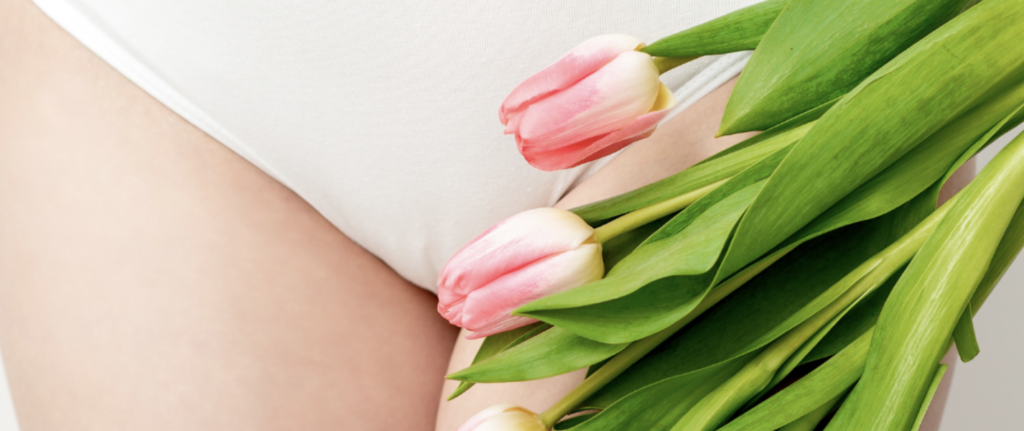
OK – so what about the vulva.
Well, there are perhaps certain factors which could, maybe justify pampering your punani (could I insert any more ‘hedging’ adverbs?)
Firstly: it’s hairy. If you’re embracing your au naturale state – hair oils can condition and soften those wiry, unruly locks while making you feel like a goddess. Just avoid essential oils or fragrances which can irritate the skin. If you’re waxing or shaving then that opens another whole host of issues that may need attention such as razor burn or ingrown hairs. Here exfoliating products with hydrating lactic acid to prevent and treat ingrowns or soothing post-shave creams formulated for the thin and sensitive vulval skin can be helpful.
Secondly: post-menopausal dryness and itching is definitely a thing. Our skin loves oestrogen so as it dips, the skin thins (we call this atrophy) and atrophic skin can burn and itch. Soothing products and barrier repair creams on the vulva help but often topical oestrogen preparations like Premarin cream is what is really needed to bring relief. Chat to your gynae about suggestions with regards to vaginal pessaries which can assist with additional lubrication. But if using specialised vulval creams restores your sense of self-love for your lady-garden, then by all means, indulge in nourishing your vulval skin. Just beware of formulations that are too active and stick to ones that promise soothing hydration. You may also want to stick to lotions for hairy areas rather than thicker creams or ointments which could irritate hair follicles and cause folliculitis or pimples down yonder.
Thirdly, friction from underwear, tight clothing, sweat, and skin-on-skin contact create a greenhouse effect with the perfect dampness and humidity levels for fungal infections which together with barrier-disrupting sweat cause a common issue in the nether regions called intertrigo. But if your lady-parts are red and itchy – try treating it with a topical antifungal cream layered with an over-the-counter 1% hydrocortisone cream and either plain zinc and castor oil or a nappy-rash cream like Bepanthen. If it’s still not settling, call your derm.
As for vulval highlighters, ‘lip’ balms, fragranced mists or wipes, vaginal sheet masks or infrared-activated charcoal masks to “detox and soothe your vulva.”– unless you’re looking for a scandalous gift – let it give you a giggle from afar.
In the ever-evolving world of personal wellness and self-care, one can’t help but wonder what’s next on the horizon. As we’ve seen, the wellness industry is no stranger to the unexpected, from candles that promise to smell like your vagina to the enigmatic yet unexplored realm of testicular skincare. With trends like these, it’s clear that when it comes to self-care, there’s always room for a curveball or two. Who knows, perhaps in the near future, we’ll be seeing products like “this lotion makes your elbows feel like Angelina Jolie’s lips.” Until then, let’s embrace the peculiar and remember that in the world of wellness, there’s always something bizarrely delightful around the corner.
The global feminine hygiene and sexual well-being markets are fast-growing categories, estimated at $28-30 billion in 2020 and projected to expand at a 5% CAGR to reach $38-40 billion by 2025. The female intimate wellness segment alone, including cleansing products, supplements and treatments, accounted for $14-16 billion globally and $4-5 billion in the U.S. in 2020. Worldwide, this segment is anticipated to grow to $17-19 billion by 2025.
Cosmetics and Toiletries
Marketers and popular press have, in recent years, promoted aesthetic treatments for the vaginal area following the consumer desire to prolong its youthfulness and keep it in shape. Volume reduction, dryness, atrophy, loss of elasticity and thinning of the dermis occur with aging. As such, demand for vaginal area rejuvenation products and treatments is an important factor to consider for product development.
True anti-aging effects are only achieved through leave-on formulas, with anti-aging claims usually reserved for products for the face and eye area. There are, however, comparable products for the vaginal area, aptly promoted with repulping or facelift claims. Long-lasting lubricating efficacy would be another relevant anti-aging action. One could also create instant relief creams for “rescue” treatments in the case of sudden irritation.
Gel or cream-gel products can additionally be formulated for topical application after the epilation or depilation of the bikini area to provide soothing properties, to combat redness due to hair removal and to provide protective bactericidal properties. Gelled emulsions could incorporate soothing agents such as allantoin, bisabolol, panthenol, aloe, beta-glucan, vegetal antibacterials and refreshing substances.
Protective Renewers of Skin Elasticity
Bakuchiol is an inhibitor of enzymes (elastase, collagenase and metalloprotease) that degrade the extracellular fibrous matrix. It reduces inflammatory effects and provides similar efficacy to retinol except with higher stability and tolerability. Bakuciol has superior antioxidant power and also guarantees antibacterial and antifungal actions on the skin, in addition to easing itch.
Tetrahydrocurcuminoids obtained from the rhizome of Curcuma longa neutralize free radicals with a scavenging effect. More potent than curcuminoid analogues, they protect against UV photo-oxidation, itch and skin aging.
Finally, Boswellia serrata resin extract is an ingredient rich in boswellic acid, known for its anti-free radical and anti-inflammatory properties. Its abilities to inhibit elastase and improve skin elasticity and tone are also recognized.
Cosmetics and Toiletries
Cell Renewal, Healing
Cell renewal, anti-inflammatory and healing effects are provided by the madecassoside, terminoloside and asiaticoside in purified Centella asiatica extract, which comprises 70-90% of these active constituents. The immunomodulatory action of this ingredient is also demonstrated, as well as its antioxidant activity and promotion of collagen I synthesis, indirectly modulating the metabolism of the connective tissue and promoting the physiological regeneration of the skin.
Hippophae rhamnoides (sea buckthorn), traditionally used in traditional Asian medicine and, more recently, in Western medicine, is known for its tonic, revitalizing and regenerative activities for skin and mucous membranes. Sea buckthorn oil is also recognized for healing wounds and burns, especially in combination with olive oil. Incorporated into slow-release microcapsules, it can carry out prolonged action by releasing the essential polyunsaturated fatty acids of olive in a controlled manner.
Cosmetics and Toiletries
Prebiotics and Probiotics
Now widely used in the cosmetics sector, prebiotic ingredients aim to improve the ratio between desired and undesired microorganisms, which could be useful for intimate care products. One example is an α-glucan oligosaccaride, which can act as a bioselective substrate for the growth of saprophytic microflora, counteracting the growth of pathogenic strains and unwanted microflora
The idea of using prebiotic ingredients to create a favorable environment for the proliferation of naturally resident bacterial flora can be extended to probiotic ingredients. The World Health Organization defines probiotics as live microorganisms that, when administered in adequate quantities, confer healthy benefits.
However, unlike foods, e.g., yogurt and powdered supplements, the application of probiotics in cosmetics is not so straightforward. This is due in part to regulatory issues. For example, the U.S. Food and Drug Administration limits the bacterial load in cosmetic products – it is not to exceed 1,000 cfu (500 for the eye contour area), while the cosmetic industry has self-regulated at values lower than 10 cfu.10 Probiotics, if delivered intact, would add to the existing load.
It is evident that the use of suitable Lactobacilli strains in topical products can bring excellent benefits to the skin. Furthermore, in some cases, microorganisms are also subjected to stress (e.g., UV, heat, etc.) to increase their production of substances that improve protection against exogenous stress.
Cosmetics and Toiletries



